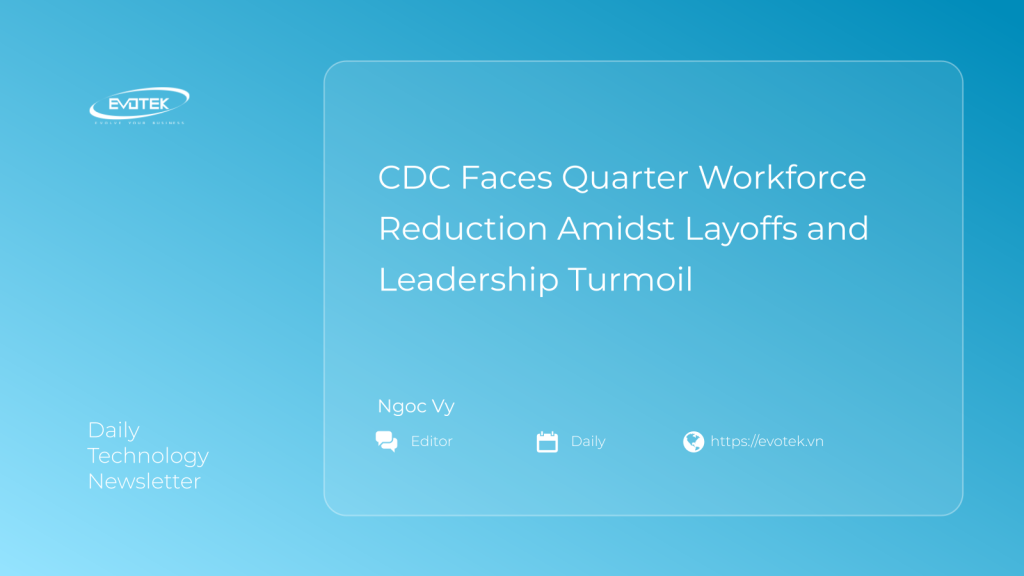The Centers for Disease Control and Prevention (CDC), a cornerstone of U.S. public health, has experienced a significant upheaval, with approximately 3,000 employees – roughly a quarter of its entire workforce – departing the agency since January. This dramatic reduction stems from a series of layoffs, resignations, and a controversial buyout program, casting a long shadow over the nation’s ability to respond to health crises.
Mass Departures and Lingering Uncertainty
The most recent wave of terminations hit amidst an ongoing government shutdown, with over 1,300 CDC employees initially receiving termination notices on October 10. However, a startling error saw about 700 of these individuals quickly reinstated via email, informed their notices were sent by mistake. Despite this, an estimated 600 people from that round remain terminated. These cuts add to previous layoffs and those who opted for the Trump administration’s “Fork in the Road” buyout initiative, contributing to the substantial overall workforce reduction.
Further compounding the operational challenges, an additional 1,300 CDC employees are reportedly on administrative leave, receiving pay but currently not performing their duties.
Union Raises Alarm Over Unofficial Figures and Legal Concerns
Official figures detailing the full scope of these reductions have not been released by the Trump administration. The comprehensive estimate of 3,000 departed staff was compiled by the American Federation of Government Employees (AFGE) Local 2883, the union representing CDC workers, which has also raised concerns about the legality and transparency of the process. According to AFGE, standard notification procedures for a reduction in force were not followed.
In response to inquiries, Andrew Nixon, Director of Communication at the Department of Health and Human Services (HHS), stated that “All HHS employees receiving reduction-in-force notices were designated nonessential by their respective divisions.”
Critical Functions Impacted Across the Agency
The impact of these staffing cuts extends across critical divisions, affecting:
- The National Center for Chronic Disease Prevention and Health Promotion
- The National Center for Health Statistics
- The CDC library
- Its human resources department
- Campus safety personnel
- The CDC’s vital Washington, D.C. office, which serves as a liaison to Congress and provides crucial public health information to policymakers.
Amidst the turmoil, some key personnel were reinstated after their initial termination. This included staff responsible for publishing the agency’s flagship periodical, the Morbidity and Mortality Weekly Report (MMWR), as well as leadership within the National Center for Immunization and Respiratory Diseases and the National Center for Emerging and Zoonotic Infectious Diseases. The renowned Epidemic Intelligence Service, known as the CDC’s “disease detectives,” also saw members brought back.
Leadership Crisis and Vaccine Policy Overhaul
The extensive workforce changes unfold against a backdrop of deep institutional turmoil that began with HHS Secretary Robert F. Kennedy Jr. taking office in February. Secretary Kennedy has not only overseen mass layoffs but has also controversially attempted to reshape established vaccine policy. Earlier this year, he removed all 17 sitting members of a federal vaccine advisory committee, replacing them with appointees, several of whom are known vaccine skeptics and have criticized past public health responses, including those during the Covid-19 pandemic.
The agency’s leadership woes intensified in August with the firing of CDC Director Susan Monarez, who had served for just one month. Monarez testified before a Senate committee in September, alleging that Secretary Kennedy pressured her to endorse new vaccine recommendations “regardless of the scientific evidence” and to dismiss career officials without legitimate cause. Her brief tenure also tragically coincided with a shooting incident on the CDC’s Atlanta campus, where a police officer was killed by an assailant who reportedly blamed Covid-19 vaccines for his illness and depression.
Senior Officials Resign, Public Health Experts Warn of Void
Monarez’s abrupt departure triggered a wave of high-level resignations. Notable figures who stepped down include Demetre Daskalakis, Director of the National Center for Immunization and Respiratory Diseases; Debra Houry, Chief Medical Officer and Deputy Director for Program and Science; and Daniel Jernigan, Director of the National Center for Emerging and Zoonotic Infectious Diseases.
This leadership vacuum has sparked profound concern among public health advocates. Abby Tighe, Executive Director of the National Public Health Coalition (formerly Fired but Fighting), herself a former CDC employee impacted by earlier layoffs, warned, “There are very few people left in leadership at the agency. We know that at the highest level of leadership in the CDC, there are no public health or medical professionals left to help guide CDC recommendations.”
The American Federation of Government Employees (AFGE), representing hundreds of thousands of federal employees, has vocally condemned the actions, demanding the immediate rescission of all termination notices. Yolanda Jacobs, President of AFGE Local 2883, has unequivocally labeled the CDC firings as “illegal” and “callous,” citing the alleged lack of standard union notification regarding such a significant reduction in force.
Echoing these criticisms, John Brooks, who previously served as Chief Medical Officer of the CDC’s division of HIV/AIDS intervention before retiring last year, stated, “Many of these cuts have been made without sufficient explanation to understand the reasoning behind them,” highlighting a broader concern about transparency and justification.

 日本語
日本語 한국어
한국어 Tiếng Việt
Tiếng Việt 简体中文
简体中文